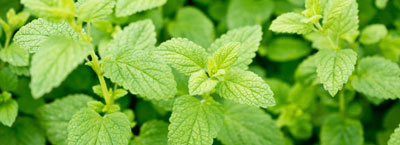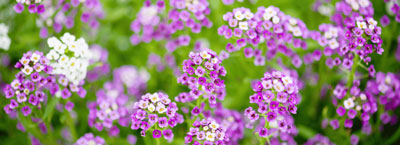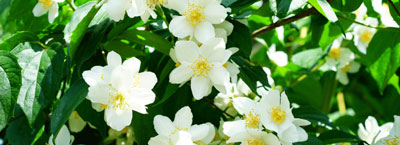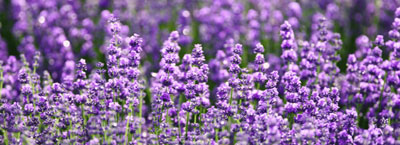Looking for the best plants for therapeutic gardens? Look no further! We've rounded up some of the best plants for therapeutic gardens, categorized based on their healing properties, visual appeal, fragrance, and tactile experience. Designed to promote wellness and facilitate interaction with the healing aspects of nature, therapeutic gardens focus on plants that cater to different senses.
Healing Plants for Therapeutic Gardens
Forget manicured lawns and picture-perfect blooms. Imagine a garden where nature's bounty transcends aesthetics, offering solace and healing with every leaf and petal. This is the magic of a therapeutic garden, a green haven where fragrant herbs whisper secrets of stress relief, and ancient remedies sprout from fertile soil. Here, every plant is more than just decoration; it's a silent partner in your journey towards well-being.

Aloe Vera: Known for its healing properties, it's commonly used to treat burns, cuts, and other skin conditions. Thrives in bright, indirect sunlight. Plant in well-draining soil and water sparingly - only when soil is completely dry.

Basil: Its fragrant leaves help reduce stress and anxiety. Prefers full sun and moist soil. Start seeds indoors or sow directly outdoors after last frost. Pinch back leaves to encourage bushier growth.

Chamomile: This plant, with its calming properties, soothes skin irritation and promotes wound healing. Enjoys full sun and well-draining soil. Direct sow seeds in spring or fall. Deadhead spent flowers to prolong blooming.

Echinacea: Renowned for boosting the immune system, echinacea a staple in many gardens. Enjoys sunny, well-drained soil with regular watering the first year. Deadhead for more blooms.

Ginkgo Biloba: Known for memory-boosting properties, it's often taken as a supplement or brewed as a tea. Tolerates various sun exposures and soil types. Sow seeds or plant rooted cuttings in spring. Requires well-draining soil and infrequent watering.

Lemon Balm: The lemony fragrance of this herb can improve mood and concentration. Thrives in full sun to partial shade and moist soil. Start from seeds or cuttings. Pinch back to control growth and enhance flavor.

Mint: The refreshing fragrance helps improve focus and can also be used to freshen breath and relieve nausea. Spreads rapidly, so plant in containers or with barriers. Prefers sun to partial shade and moist soil. Harvest leaves throughout the season.

Olive Tree: Symbolizing hope and resilience, this tree can withstand harsh conditions. Needs full sun and well-draining soil. Drought-tolerant once established. Can propagate from cuttings or seeds.

Tansy: Known for its strong fragrance, tansy can repel insects and treat skin conditions. Grows best in full sun and well-draining soil. Direct sow seeds in spring or fall. Be cautious, as tansy can be toxic in large quantities.

Thyme: Offers a refreshing fragrance that improves focus and can be used to relieve coughs and sore throats. Enjoys full sun and well-draining soil. Start seeds indoors or sow directly outdoors after last frost. Water moderately.

Willow Tree: The bark can be used to make a pain-relieving tea, aiding in relaxation and stress relief. Tolerates various sun exposures and soil types. Propagate from cuttings or air layering. Requires ample space to mature.

Yarrow: With multiple therapeutic benefits, it can be used to stop bleeding, reduce inflammation, and promote wound healing. Grows well in full sun and well-draining soil. Direct sow seeds in spring or fall. Deadhead spent flowers to encourage further blooms.
Visually Appealing Plants for Therapeutic Gardens
Imagine a haven where colors dance in the sunlight, shapes whisper stories of serenity, and every bloom beckons you closer. This is the magic of a therapeutic garden, where nature paints a masterpiece of visual solace, each petal and leaf a brushstroke on the canvas of your well-being.

Coleus: This annual plant with brightly colored leaves adds a splash of color to any garden. Prefers partial shade and moist soil. Pinch back stems for bushier growth.

Lilac: These shrubs have sweetly scented flowers that can improve mood and reduce stress. Needs full sun and well-draining soil. Plant container-grown shrubs in spring or fall. Water deeply and prune lightly after flowering.

Marigolds: Known for their insect-repelling properties, marigolds also add a pop of color. Enjoys full sun and well-draining soil. Direct sow seeds after last frost. Deadhead spent flowers for continuous blooms.

Peonies: Their large, showy blooms add a touch of elegance to any garden. Thrive in full sun and well-draining soil. Plant bare-root divisions in fall or spring. Water deeply and avoid disturbing roots.

Roses: Known for their beauty and sweet fragrance, roses can improve mood and reduce stress. Need full sun, well-draining soil, and good air circulation. Plant bare-root roses in fall or spring. Prune regularly and provide adequate water.

Sunflowers: Large, bright yellow blooms add cheer to any garden. Prefers full sun and well-draining soil. Direct sow seeds after last frost. Provide support for tall varieties.

Astilbe: Known for its ability to attract butterflies, astilbe's airy, plume-like flowers add a romantic touch. Enjoys partial shade and moist soil. Plant container-grown plants in spring or fall. Water moderately and divide clumps every 3-4 years.

Daylily: Known for attracting butterflies, daylilies bloom for several weeks in the summer, providing visual interest. Thrives in full sun to partial shade and well-draining soil. Plant bare-root divisions in spring or fall. Water moderately and divide clumps every 3-4 years.

Fern: Known for their graceful foliage, ferns create a calming and peaceful atmosphere. Prefers partial shade and moist soil. Plant container-grown ferns in spring or fall. Water regularly and mist leaves for humidity.

Hosta: Large, heart-shaped leaves add elegance to shady garden spots. Enjoys shade to partial shade and moist soil. Plant bare-root divisions in spring or fall. Water deeply and mulch to retain moisture.

Hydrangea: Their large, showy blooms attract butterflies, enhancing the beauty of your garden. Needs partial shade and moist soil. Plant container-grown shrubs in spring or fall. Water deeply and mulch to retain moisture. Prune according to variety type.
Fragrant Plants for Therapeutic Gardens
Close your eyes. Imagine stepping into a sun-drenched haven, where the air shimmers with the sweet whispers of flowers, each exhale a fragrant invitation to peace. This is the magic of a therapeutic garden, where scents dance with sunlight, weaving a tapestry of calm amidst the everyday hum. And the secret stars of this aromatic symphony? The exquisite blooms you choose to plant.

Sweet Alyssum: Known for its light, sweet fragrance, this plant adds a delicate aroma to your garden. Enjoys full sun and well-draining soil. Direct sow seeds after last frost. Deadhead spent flowers for continuous blooms.

Nicotiana: Emitting a strong, sweet scent in the evenings, it fills the air with a soothing fragrance. Prefers full sun to partial shade and well-draining soil. Start seeds indoors or sow directly outdoors after last frost.

Stock: This plant has clove-scented flowers that are particularly fragrant in the late afternoon and evening. Thrives in full sun and well-draining soil. Start seeds indoors or sow directly outdoors after last frost. Deadhead spent flowers for continuous blooms.

Moonflower: These night-blooming flowers have a potent fragrance that lingers throughout the night. Needs full sun and well-draining soil. Start seeds indoors or sow directly outdoors after last frost. Provide support for climbing vines.

Jasmine: The sweet, rich fragrance is particularly strong in the evening, providing a calming environment. Prefers full sun to partial shade and well-draining soil. Plant container-grown vines in spring or fall. Water regularly and provide support for climbing.

Lavender: Known for its relaxing, herbal fragrance, it's a must-have in any therapeutic garden. Enjoys full sun and well-draining soil. Start seeds indoors or sow directly outdoors after last frost. Prune lightly after flowering.

Heliotrope: An old-fashioned summertime favorite, with colorful clusters of fragrant star-shaped flowers. Thrives in full sun and well-draining soil. Start seeds indoors or sow directly outdoors after last frost. Deadhead spent flowers for continuous blooms.
Tactile Plants for Therapeutic Gardens
Close your eyes and imagine sinking your fingers into the plush fur of a lamb's ear, or tracing the delicate spirals of a corkscrew willow branch. These aren't your typical garden encounters; they're invitations to engage with nature through touch, a powerful sense that can bring comfort, joy, and a deeper connection to the world around us.

Lamb's Ear: The silvery-green, velvety leaves are soft and pleasing to the touch. Enjoys full sun to partial shade and well-draining soil. Water moderately and avoid overwatering.

Bottlebrush: Named for its distinctive flowers, this plant offers a unique tactile experience. Prefers full sun and well-draining soil. Tolerant of drought once established. Provide adequate water during the first year.

Pussy Willow: Known for their soft, silvery catkins that appear in the spring before the leaves, providing a fascinating tactile experience. Thrives in full sun or partial shade and moist soil. Can tolerate wet feet. Prune heavily in late winter or early spring before new growth appears to maintain desired size and shape.

Hens and Chicks: A succulent that has a slightly rubbery texture, which is interesting to touch. Enjoys full sun and well-draining soil. Drought-tolerant once established. Water minimally, only during prolonged dry spells.

Fountain Grass: The soft, arching plumes make it a tactile delight in any garden. Prefers full sun and well-draining soil. Drought-tolerant once established.

Corkscrew Willow: The twisted and contorted branches offer an unusual tactile experience. Needs full sun and well-draining soil. Tolerates a wide range of soil conditions. Prune heavily in late winter or early spring before new growth appears to maintain desired size and shape.

Licorice Plant: This plant has velvety leaves that are round and silvery-gray, offering a unique texture. Enjoys full sun and well-draining soil. Water moderately during the first year, then reduce watering once established.

Fountain Bamboo: Its canes and leaves offer interesting textures, and the plant provides a sound element to the garden as the canes rustle in the wind. Thrives in full sun or partial shade and moist, well-draining soil. Can tolerate wet feet. Water deeply during the first year, then reduce watering once established.
Final Thoughts and Additional Resources
Choosing the right plants for a therapeutic garden depends on your individual preferences and needs. While any combination of plants you like can work together, selecting specific plants for their healing properties, visual appeal, aroma, and tactile experience can create a haven for the senses. Ready to get engage your senses?
American Horticultural Society: This non-profit organization has a wealth of information on gardening, including a section dedicated to therapeutic gardens.
The Healing Gardens Institute: This institute is a global leader in the field of therapeutic horticulture. Their website provides in-depth information on the design, implementation, and evaluation of therapeutic gardens.
Plants for People: This book is a comprehensive resource for all things plants, with a specific focus on their therapeutic benefits.
GrowJoy: Plants for therapeutic gardens.





























































































































































































































































































































































































































































































































































































































































